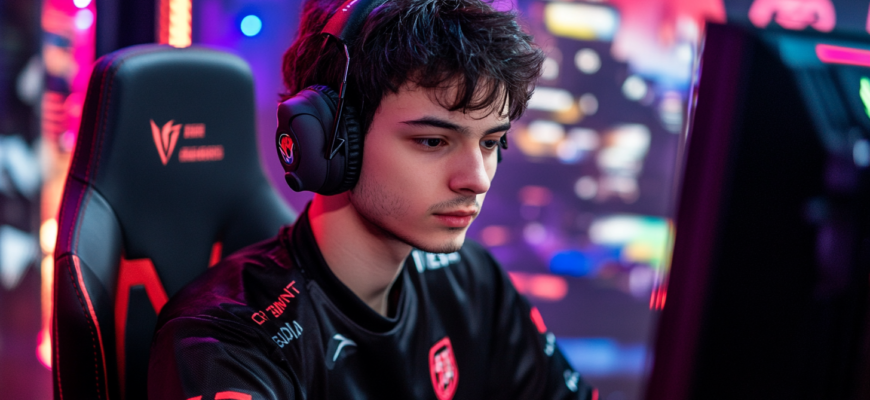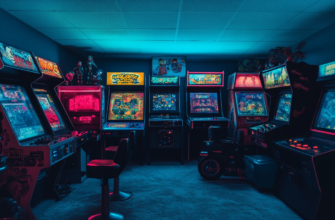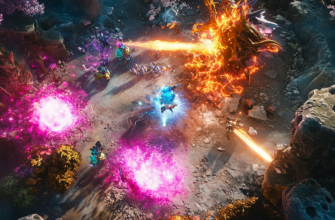- What It’s Like to Be an Esports Player: Practical Tips for Beginners
- Understanding esports: more than just playing games
- Key esports concepts to learn
- Step-By-Step Guide to Starting Your Esports Career
- Step 1: Choose your game and specialize
- Step 2: Gear up, fam!
- Key gear considerations:
- Step 3: Grind, but grind smart
- Step 4: Join tournaments and track progress
- Popular competitive platforms you can check out:
- Step 5: Join or form a team
- Step 6: Stay healthy and avoid burnout
- Some health tips for esports players:
- Conclusion: Steps to Leveling Up from Beginner to Pro Esports Player
What It’s Like to Be an Esports Player: Practical Tips for Beginners
So, you’ve been smashing it in your favorite games, right? Maybe you’ve been thinking, “Hey, I could do this professionally!” That’s awesome to hear, bro! But let me tell you, being an esports player isn’t just about mad skills—it’s a whole lifestyle. Just like any sport, there’s training, mental prep, and some serious competition. In this article, I’ll give you a breakdown of what it’s *actually* like to be an esports player and what beginners need to know to get started in the world of competitive gaming. Buckle in, and let’s grind!
Understanding esports: more than just playing games
Before jumping into how-tos and tips, let’s take a step back and understand what esports really is. As a newbie, you may think it’s all about playing games for hours. That’s true… but there’s so much more. Esports is a massive industry involving professional players, teams, tournaments, sponsors, and, of course, fans—you’re playing for an audience. In simple terms, esports refers to competitive gaming where individuals or teams face off in tournaments for cash prizes and fame.
Key esports concepts to learn
- Meta: Meta refers to the dominant strategies or tactics that are widely considered effective. Pro players and esports teams always keep up with the meta.
- Scrims: Short for scrimmages, these are practice matches between teams (with no stakes) to test tactics and hone skills.
- Team synergy: In team-based games, how well players understand each other’s movements, strategies, and abilities is one of the most critical aspects of victory.
- Mindset/tilt: Maintaining your mental focus is as important as technical skills. If you get tilted (frustrated or emotional), it can derail your performance big time.
Now that we’ve covered the basics, let’s dive into how you can start your journey—and avoid the mistakes many beginners make.
Step-By-Step Guide to Starting Your Esports Career
Step 1: Choose your game and specialize
First off, you can’t master every game out there—stick to one or two games that really resonate with you and have strong competitive scenes. Games like League of Legends, CS:GO, DOTA 2, Fortnite, Valorant, or Overwatch have massive tournament circuits and established professional leagues. Dive deep into mastering the mechanics of that game. Play ranked matches, learn the meta, and understand everything from characters to map rotations.
Tip: Watch pro-player streams regularly. This lets you see the movement, mindset, and communication of esports pros in real time.
Step 2: Gear up, fam!
Don’t underestimate the impact of hardware. A good gaming setup can be the difference between winning and losing in esports. At the very least, make sure you’ve got a high-refresh-rate monitor (144Hz or higher), a gaming mouse that suits your grip style, and a mechanical keyboard with responsive switches.
Key gear considerations:
- Monitor: Higher refresh rates (144Hz+) are crucial for smoother gameplay.
- Mouse: Lightweight models with quality sensors increase precision. Sub-1ms latency is ideal.
- Headphones: For shooter games, hearing footsteps and directional sound is key. Get noise-cancelling headphones with 7.1 surround sound if possible.
- PC performance: You don’t need a world-class rig, but make sure your setup doesn’t lag in mid-game. Upgrade your graphics card and CPU if you’re dropping frames.
Tip: Practice lowering your game’s graphical settings for maximum FPS (frames per second). Esports players care more about frames than graphics quality.
Step 3: Grind, but grind smart
Now that your setup is ready… it’s grind time. But here’s the trick: quality over quantity. You want to practice with a purpose. Don’t just mindlessly play all day—break up your practice into focused drills (like aim training in shooters) and strategy tests. If you notice a weakness in your game, find drills to strengthen it. Also, try joining ranked or competitive queues as often as possible. Playing against tougher opponents builds experience.
Tip: Use aim trainers like Aim Lab or Kovaak’s if you are in a first-person shooter (FPS) environment. They simulate in-game scenarios, sharpening your accuracy over time.
Step 4: Join tournaments and track progress
Once you’re feeling comfortable, it’s time to test those skills in an actual tournament setting. Platforms like Battlefy, Toornament, or FACEIT offer a ton of opportunity for gamers to join amateur-level tournaments. Even pro players had to start somewhere! Keep in mind, playing in a competitive setting will teach you way more than practicing by yourself.
Always track your progress. Use tools like match replays to assess in-game decisions. Note where you went wrong and analyze key moments to improve.
Popular competitive platforms you can check out:
- FACEIT – Especially for Counter-Strike players, a good place for serious scrims.
- Battlefy – Hosts many esports tournaments in various games for beginner to intermediate players.
- Toornament – Popular for major MOBAs like League of Legends, this platform has various tourneys for solo or team-based games.
Step 5: Join or form a team
In many esports games, teamwork is essential. If you’re diving into a team-based game like CSGO, Overwatch, or League of Legends, find a squad early on. Teams can be found via gaming communities on social networks, Discord servers, and Reddit threads. Joining a team can vastly improve your own skill level as you’ll have the opportunity to scrim against other teams and gain direct insight into team-based strategies.
Tip: Don’t rush finding an esports team just because you want quicker results. Look for individuals who communicate well and have the same ambitions as you in the game.
Step 6: Stay healthy and avoid burnout
One of the lesser-talked-about aspects of being an esports player is maintaining your physical and mental health. Pro gamers have exercise routines to stay in shape and boost focus. Additionally, take care of your wrists—repetitive strain injuries (RSIs) can ruin careers before they take off.
Some health tips for esports players:
- Stretch your wrists frequently.
- Take breaks after every 1-2 hours of gameplay.
- Get enough sleep! Sleep is crucial for reaction time and decision-making.
- Try some light cardio to improve your focus and relieve stress. Trust me, it helps.
- Practice mindfulness or meditation to ease mental stress from long training sessions or tilts.
Conclusion: Steps to Leveling Up from Beginner to Pro Esports Player
So, you wanna get into esports? Remember it’s a marathon, not a sprint! Becoming an esports player is a mix of discipline, dedication, and smart practice. Start by super-specializing in your game, getting the right gear, and making sure you’re grinding in a meaningful way. And most importantly? Track your progress and always look for new ways to improve your gameplay. Lastly, esports is all about community, so join or form a team and find people to journey with you to the top.
As your bro in gaming, here’s my challenge to you: put these tips into practice for the next month. Trust me, you’ll see noticeable improvements in your game! You owe it to yourself and your future as an esports competitor. Keep grinding, stay smart, and I look forward to seeing you take that stage at the next esports event!

















